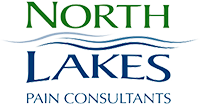Everything You Need to Know About Lumbar Spinal Stenosis
Everything You Need to Know About Lumbar Spinal Stenosis
Everything You Need to Know About Lumbar Spinal Stenosis
Lumbar spinal stenosis is a common condition affecting the elderly. It’s the cause of lower back and leg pain or sciatica and results from the normal wear and tear effects of aging seen in up to 95% of people above 50 years. Young people born with a narrow spinal cord can also suffer from this condition.
To understand lumbar spinal stenosis, you’ll need to take the anatomy of the spinal cord into account.
The spine consists of small bones called vertebrae stacked on each other with a hollow passage where the spinal cord runs.
The spinal cord is a tubular bundle of nerves running through a spinal canal. It transmits nerve signals, coordinates reflexes, and communicates with the brain. The spinal cord is very delicate and susceptible to injury, which can lead to loss of function.
What Is Lumbar Spinal Stenosis?
Lumbar spinal stenosis is a severe condition with mild to serious symptoms that can hinder your day-to-day life.
It is a condition caused by an abnormal spinal canal narrowing in the lower part of the back. It can cause pressure in your spinal cord or the nerves that go to your legs from the spinal cord.
Spinal stenosis can affect any part of your spinal cause, but it commonly affects the lower back.
Causes of Lumbar Spinal Stenosis
The common cause of lumbar spinal stenosis is osteoarthritis. Other causes are;
- Spinal tumor
- Herniated disc
- Injury to the spine
- Previous spine surgery
- Rheumatoid disease
- Congenital disabilities
Symptoms of Lumbar Spinal Stenosis
The symptoms of lumbar spinal stenosis appear gradually, and you may experience pain relief when you bend forward. The pain is usually worse when standing up straight or walking. These symptoms include;
- Numbness and tingling sensation on the legs and buttocks
- Lower back pain
- Weakness in legs and hands
- Burning pain on the buttocks going down to the legs
- Loss of sensation in the feet
- You may experience numbness in the private area leading to loss of control of your bowel and bladder.
Diagnosis of Lumbar Spinal Stenosis
Before treatment, your doctor will check your medical history and conduct a physical exam. Then they will send you for imaging tests to confirm the diagnosis. These imaging tests include;
- X-rays
- MRI scans
- CT scan
- Myelogram
Treatment of Lumbar Spinal Stenosis
Your doctor will recommend non-surgical or surgical treatment depending on your symptoms and severity. Here are treatment options for Lumbar spinal stenosis;
Oral medications
Your doctor may recommend NSAIDs to relieve pain and inflammation or medicines like gabapentin with pain-relieving properties.
Physical therapy
It will involve working with a physical therapist on exercises to strengthen your back and legs.
Epidural steroid injections
Epidural steroid injections help reduce pain and inflammation. Your doctor will inject the steroid medication directly into the epidural space after numbing the area with a local anesthetic.
Surgery
Depending on what is causing your symptoms, your doctor may recommend surgery to decompress nerves, widen the space between vertebrae, or remove bone spurs.
Contact North Lakes Pain
Visit our website to learn more about pain management, or contact us by filling out the form below if you need help managing lumbar spinal stenosis.
